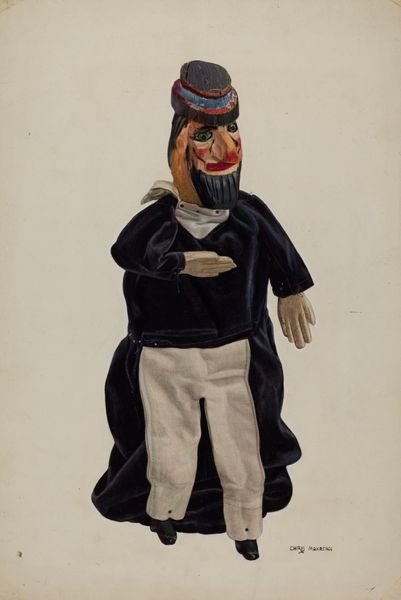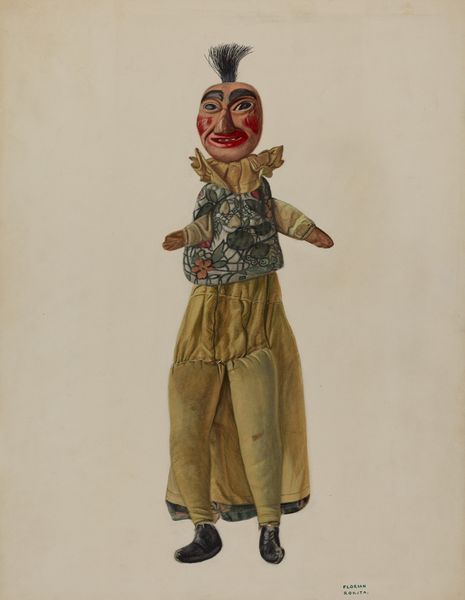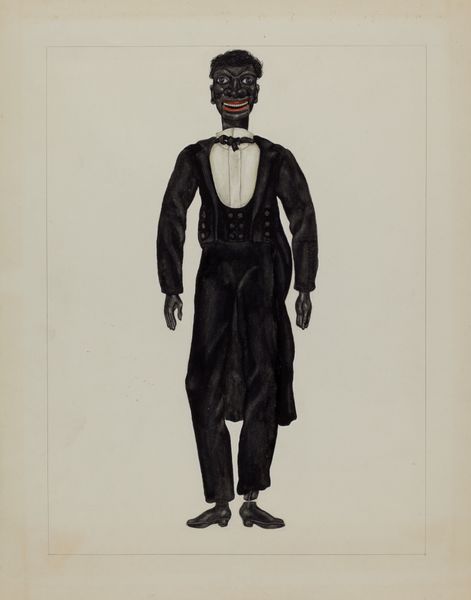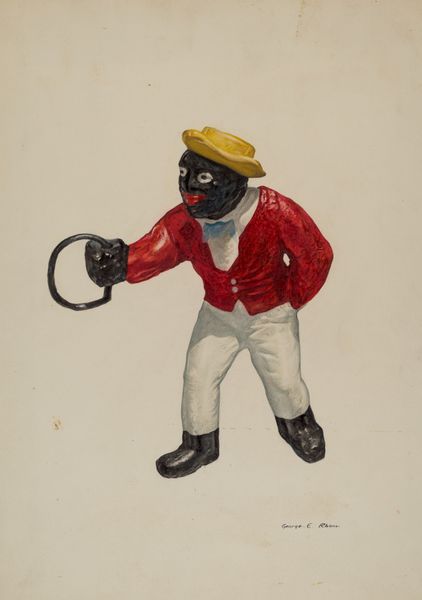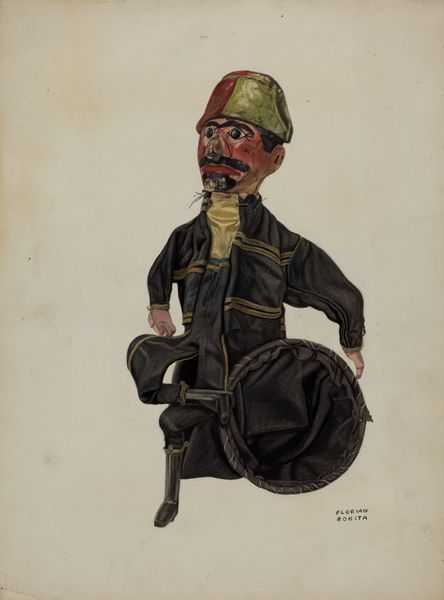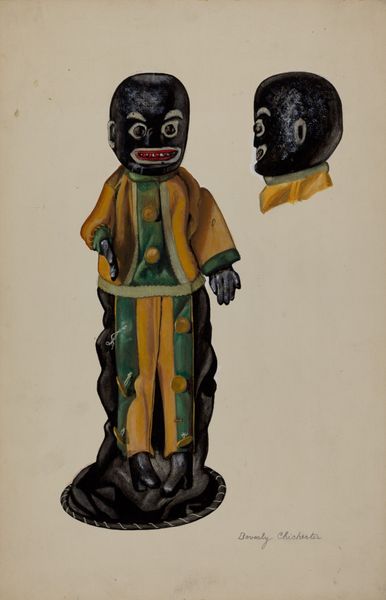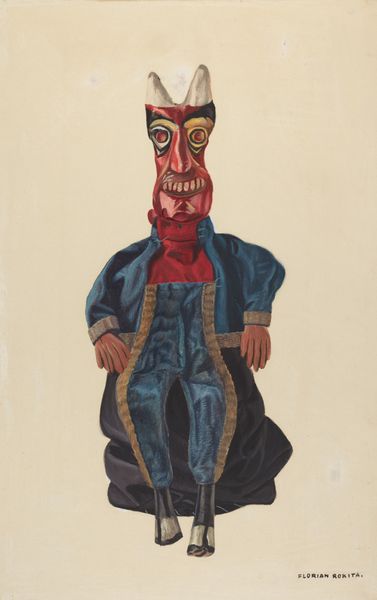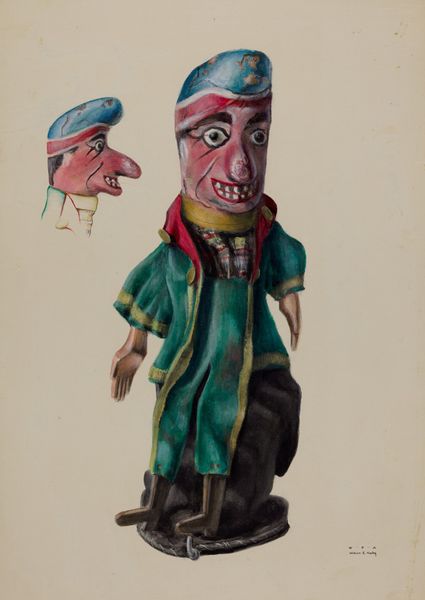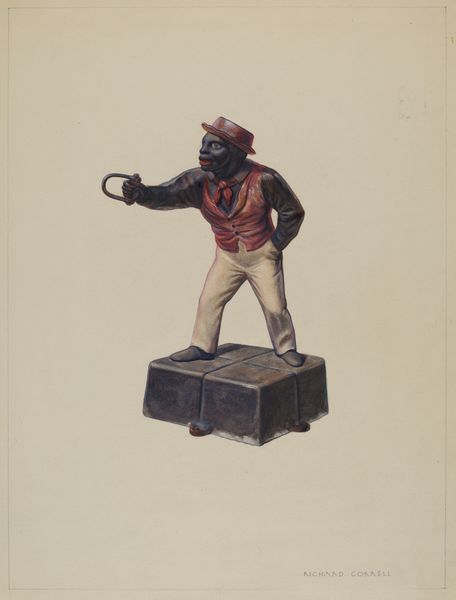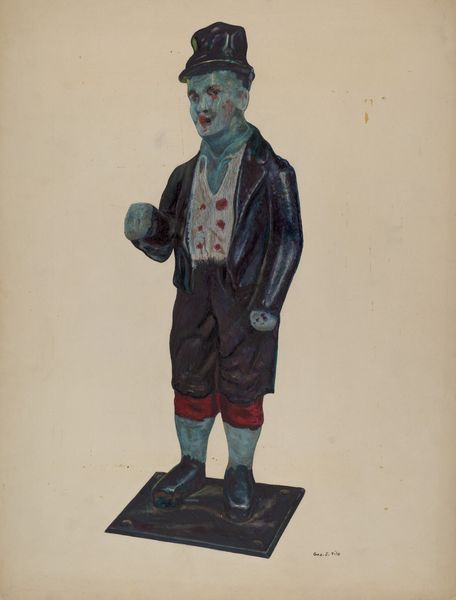
drawing, watercolor
#
portrait
#
drawing
#
caricature
#
charcoal drawing
#
figuration
#
watercolor
#
folk-art
#
watercolor
Dimensions: overall: 45.6 x 37.9 cm (17 15/16 x 14 15/16 in.) Original IAD Object: 24 1/4" high
Copyright: National Gallery of Art: CC0 1.0
Curator: Immediately, what strikes me is the potent mix of the playful and the deeply unsettling. Is this the uncanny valley distilled into pigment? Editor: Indeed, there's something disquieting in its caricature, a distorted reflection staring back at us. What we have here is Beverly Chichester’s rendering from about 1936, called "Minstrel Hand Puppet," crafted with watercolor and perhaps charcoal drawing techniques. The focus, quite literally, is the puppet itself. Curator: Chichester really captured a strange essence of a thing meant for entertainment. The stilted pose, the exaggerated features – it's almost like a painted scream caught mid-performance. The striped sailor shirt combined with what seem like overly formal breeches only intensifies that weird dichotomy. Editor: Precisely. The materials themselves tell a story. Watercolors were often associated with folk art and less formal productions, contrasting with the minstrel’s performance’s commodification, not just of black culture, but black bodies as performance and labor for wider consumption. One could almost see how such practices would intersect during the WPA era. Curator: Exactly. You nailed it! Those heavy contrasts definitely amplify that weird stage presence. The way the artist defined that charcoal blackface...the lips highlighted almost with theatrical defiance against the blue and purple, feels like they are trying to say something unspoken behind the minstrel façade. It almost feels rebellious, like a secret cry against his expected narrative. Editor: This "puppet's" materiality further brings to light the power relations that constitute a long legacy of labor and representation: note the delicate watercolors depicting blatant racist stereotypes during the New Deal era, the economic distress behind the "wholesome" entertainment of an exploitative cultural form. It exposes minstrelsy's continued cultural dominance within its material, beyond its assumed disposability or mere “entertainment.” Curator: Which also gives it lasting power, despite the terrible implications. The artwork transforms from an item into a historical document capable of expressing the conflicting realities embedded in objects that served entertainment in our collective memory. Editor: Agreed. Hopefully, our considerations of its materials, contexts, and artistic techniques may lead us to more difficult dialogues, expanding conversations concerning labor, representation, and responsibility.
Comments
No comments
Be the first to comment and join the conversation on the ultimate creative platform.
